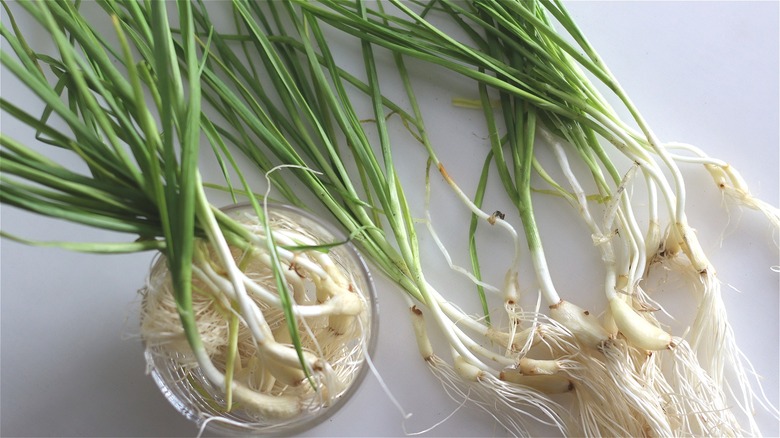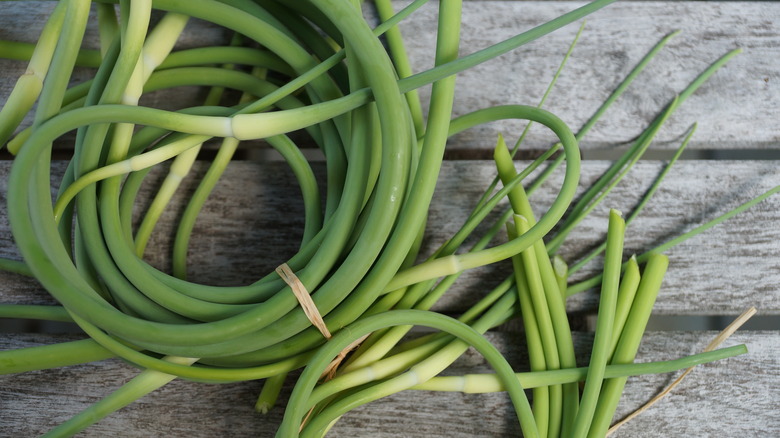The Difference Between Green Garlic And Garlic Scapes
What would cooking be without garlic? From soups to pastas to creamy hummus, countless meals rely on the pungent, savory foundational flavor from sauteeing garlic. There's a reason it's been used in cooking and for health benefits since the time of the ancient Egyptians. But for those of us who think there's no such thing as too much garlic, broaden your horizons to the other iterations of the plant by incorporating green garlic and garlic scapes into your cooking. Both come from the same garlic plant but are harvested at different points in the plant's lifecycle and can be used in different applications.
Less commonly used than the familiar knobby, papery head of cloves at the grocery store, green garlic is simply a young, unmatured version. As the name implies, it's bright green in color and has a long sprouty shape, like a bunch of scallions. If you're unsure if what you're seeing on the farmers market table is green garlic, give 'em a whiff — even when immature, they'll have that unmistakable garlic scent. This "baby" garlic, as it's also called, will still be fresh and supple (store-bought heads of garlic are dried). Plan to use them quickly, just like a bunch of fresh green onions. Their fresh, tender texture comes with a less intense flavor than your standard bulb. Use atop a green salad or potato salad, in a stir fry, on a pizza, or anywhere you would use a scallion, onion, or leeks.
What is a garlic scape and how to use them
Ever seen a bunch of curly, spiraled, green stems at the farmers market that look like they came from the world of Dr. Suess? Those aren't curly green beans, onions, or ramps. They're garlic scapes, the above-ground flowering stem that sprouts from the garlic plant. The lesser-known form of garlic is a gem of the produce world that still requires a bit of tracking down. You'll often see them at farmers markets or some specialty grocery stores. Pounce on them, if you do! Their time to shine is limited to a few months in spring and early summer.
Often, the scapes are snipped off or discarded, considered a byproduct of the more valuable head of garlic. But when harvested and eaten, the scapes have a distinct, enjoyable flavor and taste in their own right, with a more subtle garlic flavor and less kick than the dried cloves. Often sold in bunches of long, spindly stems, scapes are best enjoyed where their delicate flavor can shine — raw atop salads, sprinkled into soups, blended into pestos, or as a topping for avocado toast or scrambled eggs. Not much prep is needed to capitalize on their delicious garlicky flavor, other than removing the tougher tip and bulb. Try tossing the scapes in oil and grilling or sauteeing them. Then enjoy over pasta or plain with a dash of salt and a squeeze of lemon for an herby, flavorful treat.

